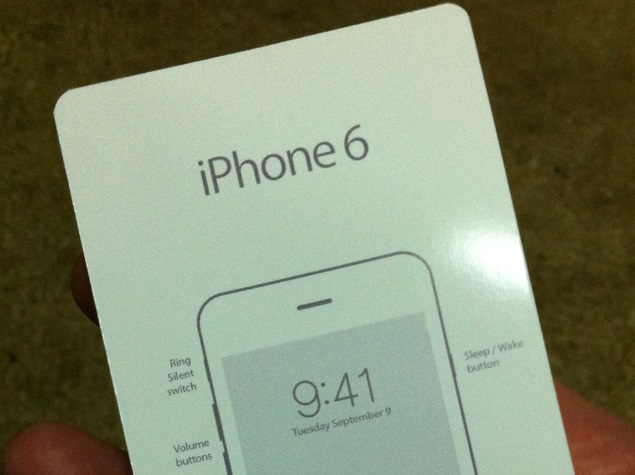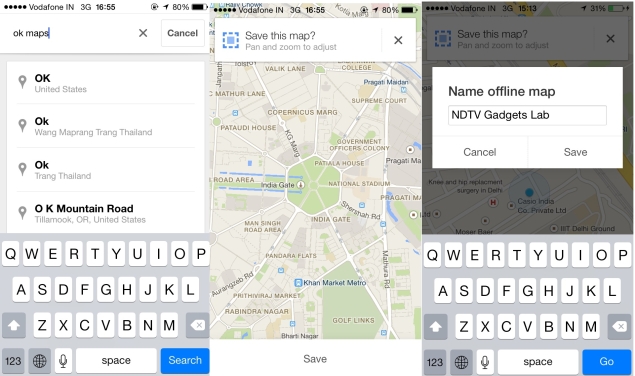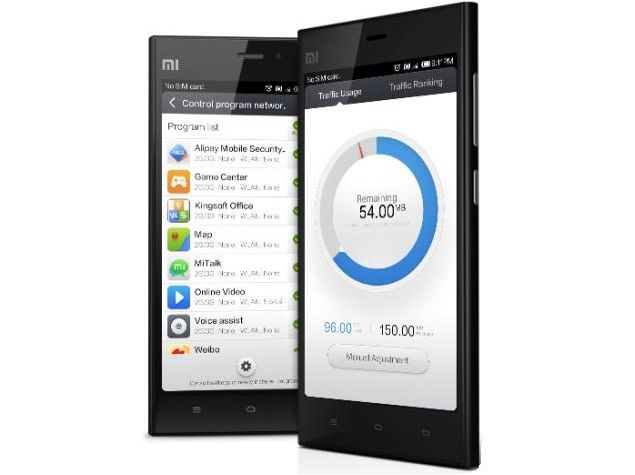Should Your Company Consider Using Drones?

The technology is hardly bleeding edge. Unmanned aircraft were used
for warfare all the way back during the Vietnam War. Yet suddenly,
everyone seems to be talking about, thinking about, planning for use of,
or worrying about privacy invasions from the aviation industry calls
unmanned aerial vehicles, or UAVs—or drones, to everyone else.
Why
now? Drones are an important part of the Internet of Things, and thus
the Internet of Everything. They can be summoned to carry objects from
one location to another, providing the instant fulfillment online
shoppers want, as well as near-instant access to medical or mechanical
supplies in situations where getting those items quickly can save lives.
Equipped with wi-fi, they can provide broadband connectivity on demand
to places where it would otherwise be unavailable. Equipped with video
cameras, they can show us what’s going on in locations where we might
otherwise have to guess. Equipped with RFID antennas or sensors, they
can help us track objects or people, or alert us to changing
environmental conditions.
Someday they could form an “
Internet of Airborne Things,” as some envision it. And recently drones have
become affordable. 3D Robotics, the company co-founded by Chris Anderson, former editor of
Wired, says it ships about 50 drones a day, most costing less than $1,000.
The
biggest obstacle to drone adoption so far is neither technological nor
economic, but legislative. The FAA has long banned drones, other than
for personal use, from U.S. airspace, ban that’s complicated by the fact
that commercial drones personal drones are often the exact same
devices--which means the FAA must figure out why a drone is in the air
to know if it’s legal or not.
The FAA recently grounded many
drones, some before they were even invented, by declaring that drones
gathering news information are commercial and thus illegal for now, and
so are the delivery drones Amazon plans to develop.
That’s likely to change, however. The
FAA Modernization and Reform Act,
passed in 2012, gave the FAA until September 2015 to create a framework
for licensing commercial drones. With that deadline on the horizon,
this summer the FAA issued its first commercial drone license to BP.
Now
that BP has broken the ice others are sure to follow, and some estimate
there will be 30,000 civilian drones criss-crossing our airspace by
decade’s end. It’s more than time for smart technology leaders to start
thinking about how drones might or might not fit in with your plans.
Consider:
Could your organization benefit from using drones?
Why
would it want to? Right now, the answer is most likely yes if it needs
to oversee conditions in remote locations that are tough to monitor.
That’s the purpose of BP’s drone license: The oil company will use
drones with sensors and cameras to monitor its pipelines, roads, and equipment at Prudhoe Bay.
And
drones can provide powerful security support as well. In many countries
where commercial drones are legal, governments and wildlife groups are
using them to
watch over endangered speciesand
reduce poaching. It’s easy to see how many organizations could monitor
their facilities for intrusion or theft more effectively with airborne
drones than with human or canine security guards. Likewise, drones have
been used to facilitate more than 1,400 search and rescue missions, and
helped find more than 300 living people, although the
FAA frowns on this use as well.
Drones
are also a great way to get a look at a location or facility—and let
customers and other constituents get a view of it as well. This is why
drones are appealing to news organizations (which currently use larger
and more expensive helicopters for this task) and filmmakers, who
sometimes use unlicensed drones to get those
great aerial shots.
And
just because the FAA says delivery drones are illegal for now, don’t
count them out forever. The FAA document seems designed not to ban
delivery drones exactly, but to “clarify” what common sense already
dictates: That such use does not qualify as “Hobby or Recreation.”
Amazon, like BP, will need a license to fly its drones, but there was
never any reason to think otherwise.
Another more surprising use for drones is to enable the Internet itself. DARPA is already
providingsuch
hotspots to the military, and Facebook and Google have each announced
plans to do the same for people not currently reached by broadband. For
companies that need to provide wireless Internet access in locations
that don’t have it, drones might be a very viable option, since even
some very inexpensive models can provide a wireless signal.
If drones can provide some real benefits, the new technology may also come with some challenges. Among them:
How will they integrate with your network?
To
truly take advantage of drone technology and make it part of your IoT
deployment, the devices will need to integrate with existing networks
and systems. That leads to the question of what
operating system the drones might use, very much up for grabs at the moment.
Then
there’s the data. Drones, like other Internet of Things devices, are
likely to deliver an enormous amount of data, perhaps including video
that they have collected. They can provide detailed records of people
and vehicle movements in remote locations where you would otherwise have
limited visibility. They can survey large inventories at a
manufacturing location, providing information on what supplies are
running low. In Africa, drones are combined with RFID antennas to
identify protected animalsfrom
the air. Drones combined with RFID tagging could also be a powerful
combination in many other settings, from locating vehicles on work sites
to tracking precious assets to finding, monitoring, and providing for
support employees in outdoor settings. Have a careful plan for what data
to collect, and how that data will be processed and stored, before
launching that first drone.
The thought of a hacker taking over a drone is scary, and it’s not
far-fetched. Last year, a white-hat hacker created a drone that can find
and hijack other drones. This year, DARPA unveiled what it claims is a
hack-proof drone. Is it truly impervious? Stay tuned.
Who will operate, program, and maintain the drones?
The
commercial drone industry will create tens of thousands of jobs and
some colleges aren’t waiting for the FAA to get its act together;
they’re already offering
drone operation courses.
That’s
smart: If the industry abruptly takes off—which looks likely once the
FAA gives more commercial drones permission to fly—there will be a lot
of demand for technicians with the right skills. After web developers
and data analysts, will drone operators be the next impossible-to-hire
specialists?
It looks like they probably will. So if you’re
considering commercial drones, keep in mind you may want to plan for
training drone operators too



 Newlands Girls School students
Newlands Girls School students

 Hundreds of Indian workers in Kuwait have sent an SOS to the Narendra
Modi government after the arrest of 25 colleagues for allegedly
murdering two Egyptians.
Hundreds of Indian workers in Kuwait have sent an SOS to the Narendra
Modi government after the arrest of 25 colleagues for allegedly
murdering two Egyptians.
 However, the alleged quick start guide
contradicting flurry of earlier leaks show a new design of the iPhone 6.
The leaked document shows the alleged iPhone 6 sporting the same
straight-edge industrial design, instead of curved edges, seen on the
iPhone 4, iPhone 5 and iPhone 5s. MacRumors also points
to
some formatting errors on the leaked guide, further questioning its
authenticity.
However, the alleged quick start guide
contradicting flurry of earlier leaks show a new design of the iPhone 6.
The leaked document shows the alleged iPhone 6 sporting the same
straight-edge industrial design, instead of curved edges, seen on the
iPhone 4, iPhone 5 and iPhone 5s. MacRumors also points
to
some formatting errors on the leaked guide, further questioning its
authenticity.














 It packs a 2300mAh battery and will be available in two
colours - Black and White. Connectivity options include 4G LTE, GPS/
A-GPS, GLONASS, Bluetooth 4.0, NFC, Wi-Fi, DLNA, and ANT+ for sports
accessories. It also comes preloaded with Lifelog app for SmartBand
SWR10. Notably, Sony has not announced a dual-SIM variant of the Xperia
M2 Aqua yet.
It packs a 2300mAh battery and will be available in two
colours - Black and White. Connectivity options include 4G LTE, GPS/
A-GPS, GLONASS, Bluetooth 4.0, NFC, Wi-Fi, DLNA, and ANT+ for sports
accessories. It also comes preloaded with Lifelog app for SmartBand
SWR10. Notably, Sony has not announced a dual-SIM variant of the Xperia
M2 Aqua yet.

 Sharp's
Aquos Crystal packs a 2040mAh battery, which is rated to deliver up to
13 hours of talk time, while it measures 131x67x10mm and weighs 141
grams. The smartphone supports Wi-Fi 802.11b/g/n, Bluetooth 4.0,
Micro-USB, 3G, and 4G LTE connectivity options.
Sharp's
Aquos Crystal packs a 2040mAh battery, which is rated to deliver up to
13 hours of talk time, while it measures 131x67x10mm and weighs 141
grams. The smartphone supports Wi-Fi 802.11b/g/n, Bluetooth 4.0,
Micro-USB, 3G, and 4G LTE connectivity options.




 Yeola, Maharashtra: For a school dropout, Pankaj
Parakh is doing a little better than ok. A sign of his success - a
shirt, made of pure gold, that weighs four kilos and costs 1.30 crores.
Yeola, Maharashtra: For a school dropout, Pankaj
Parakh is doing a little better than ok. A sign of his success - a
shirt, made of pure gold, that weighs four kilos and costs 1.30 crores. 
 LG seems to be on a launching spree when it comes to releasing variants
of its flagship G3 smartphone. The
company has on Thursday launched the new LG G3 A smartphone, which will
be initially available in South Korea via SK Telecom mobile carrier.
LG seems to be on a launching spree when it comes to releasing variants
of its flagship G3 smartphone. The
company has on Thursday launched the new LG G3 A smartphone, which will
be initially available in South Korea via SK Telecom mobile carrier.

 A recent study conducted by the researchers at the University of
Adelaide in Australia, holds that drinks that are high in acidity can be
harmful for children's teeth. The acid present in soft drinks, fruit
juices and other sugary and aerated drinks can cause permanent damage to
their teeth. Dental researchers call it the 'high acidity triple
threat' that can have long-term effects on growing children. Besides
this, tooth grinding and acidic reflux can also affect dental health.
A recent study conducted by the researchers at the University of
Adelaide in Australia, holds that drinks that are high in acidity can be
harmful for children's teeth. The acid present in soft drinks, fruit
juices and other sugary and aerated drinks can cause permanent damage to
their teeth. Dental researchers call it the 'high acidity triple
threat' that can have long-term effects on growing children. Besides
this, tooth grinding and acidic reflux can also affect dental health. 